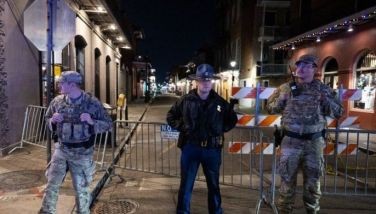A cultural guide to Sochi opening ceremony
MOSCOW — Wondering about some of the Russian culture featured Friday in the opening ceremony of the Sochi Olympics? Here's a guide to the history, literature and art that made up a big part of the show.
WAR AND PEACE
For most, this enormous book is more doorstopper than showstopper. But many Russians, who grew up reading Leo Tolstoy's epic saga in school, know the story and its most famous scene — Natasha Rostova's first ball — by heart.
Bolshoi Theater prima ballerina Svetlana Zakharova played Rostova, a young debutante in 19th-century Russia who is desperate to be asked to dance at her first ball. It's love at first sight when the handsome Andrei Bolkonsky, played by Danilo Korusnetsev of St. Petersburg's Mariinsky Theater, approaches.
But their love proves cursed: Prince Bolkonsky is later injured on the battlefield by Napoleon's invading army, and eventually dies in Natasha's arms.
RUSSIA'S AVANT GARDE
The ceremony highlighted the young artists who took the country by storm after the Bolshevik Revolution in 1917. Breaking away from what they called the decadence of traditional painting, the group pioneered a style influenced by industrial design and communist ideology.
The show made references to Kazimir Malevich, whose angular, almost sculpture-like paintings and famous black square were a loud rebuke to traditional painting. It featured Alexander Rodchenko, a groundbreaking photographer most famous for his dramatic pronouncement that 'Painting is dead,' and El Lissitzky, who pioneered propaganda as art.
After Stalin came to power in the 1920s and started to crack down on the arts, many of the country's energetic young artists fled the country or were killed.
UNCLE STYOPA
There couldn't have been a better part for former boxing heavyweight champion Nikolai Valuev, who towers at 7-foot-1 (2.16 meters), to play then the giant police officer Stepan Stepanov — Uncle Styopa for short.
Uncle Styopa is one of the country's most beloved children's tale characters, with the steel jaw and thick neck of most Soviet-era heroes.
In the ceremony, he walks around town punishing neighborhood hooligans, helping lost children find their mothers, and even saving a hardened Russian babushka, who is standing on an enormous chunk of ice doing her laundry when it breaks off and floats down the river.
Uncle Styopa was also a winter athlete in the show, dazzling fans by dashing to first place in a speedskating race. At the finish line, a little girl clambers to the top of airplane stairs so that she can reach up and hand Styopa her teddy bear as a prize.
OTHER HIGHLIGHTS
Russia has long prided itself on its contribution to classical music and dance, and so the fanfare wouldn't be complete without a rendition of Swan Lake, Pyotr Tchaikovsky's famous classic. The performance by Mariinsky Ballet dancer Diana Vishneva took a modern turn, illuminated with LED lights.
Anna Netrebko, a renowned operatic soprano, sang the national anthem, accompanied by the Russian State Symphony Orchestra, conducted by the shaggy-haired Yuri Bashmet, one of Putin's most avid admirers.
- Latest
- Trending































